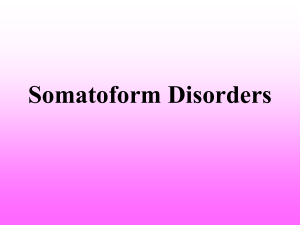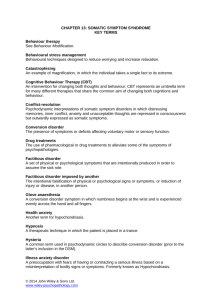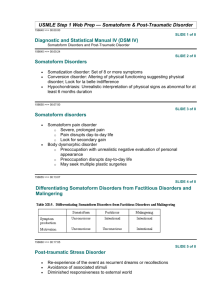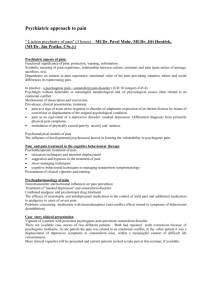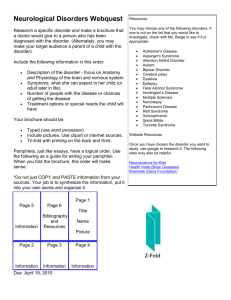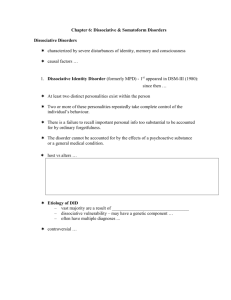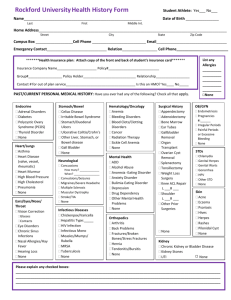Somatoform disorders in children:
advertisement
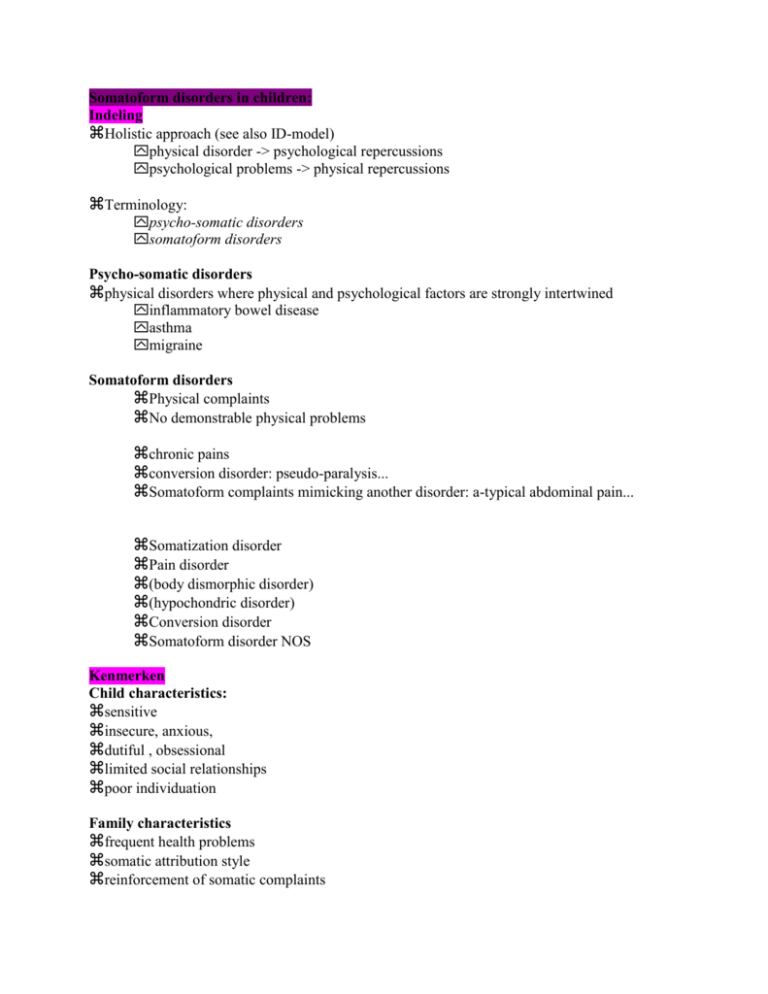
Somatoform disorders in children: Indeling Holistic approach (see also ID-model) physical disorder -> psychological repercussions psychological problems -> physical repercussions Terminology: psycho-somatic disorders somatoform disorders Psycho-somatic disorders physical disorders where physical and psychological factors are strongly intertwined inflammatory bowel disease asthma migraine Somatoform disorders Physical complaints No demonstrable physical problems chronic pains conversion disorder: pseudo-paralysis... Somatoform complaints mimicking another disorder: a-typical abdominal pain... Somatization disorder Pain disorder (body dismorphic disorder) (hypochondric disorder) Conversion disorder Somatoform disorder NOS Kenmerken Child characteristics: sensitive insecure, anxious, dutiful , obsessional limited social relationships poor individuation Family characteristics frequent health problems somatic attribution style reinforcement of somatic complaints poor coping & problem solving enmeshment; conflict avoidance no tradition of verbalizing important things increased sensitivity ? emotional bias Oorzaak Biological factors: specific (genetic) liabilities leading to lower thresholds for physical sensations and signs e.g. different sensitivity for / production of stress hormones ? Different sensitivity for CO² levels, inducing vicious circle of anxiety ? Stressors: School Home Peers Specific trauma’s : abuse... STRESS Psychosocial evaluation Emotional reaction (anxiety, anger…) Physical reaction Solution Somatic complaints Pseudo-solution stress < Different theories: Stress-theory present past Emotional bias reinforcement home medical environment Assessment: Two paths from the start: Physician: medical attention physical explanation treatment…. somatic Psychological Beware of taking one path: it’s difficult to come back on your steps ! Treatment: Joining: accepting the reference scheme of the family: there’s something physical accepting symptoms, but not necessarily their technical explanation Indirect, non-confrontational techniques: metaphors (physiotherapy often offers good ones) as-if questioning, circular questioning Quietly shifting and broadening the family’s reference system Rehabilitation: = walking on two paths Reduce gain Eg. Ordeal therapy Stress-reduction especially if unusual stressors Improving coping strategies, empowerment
